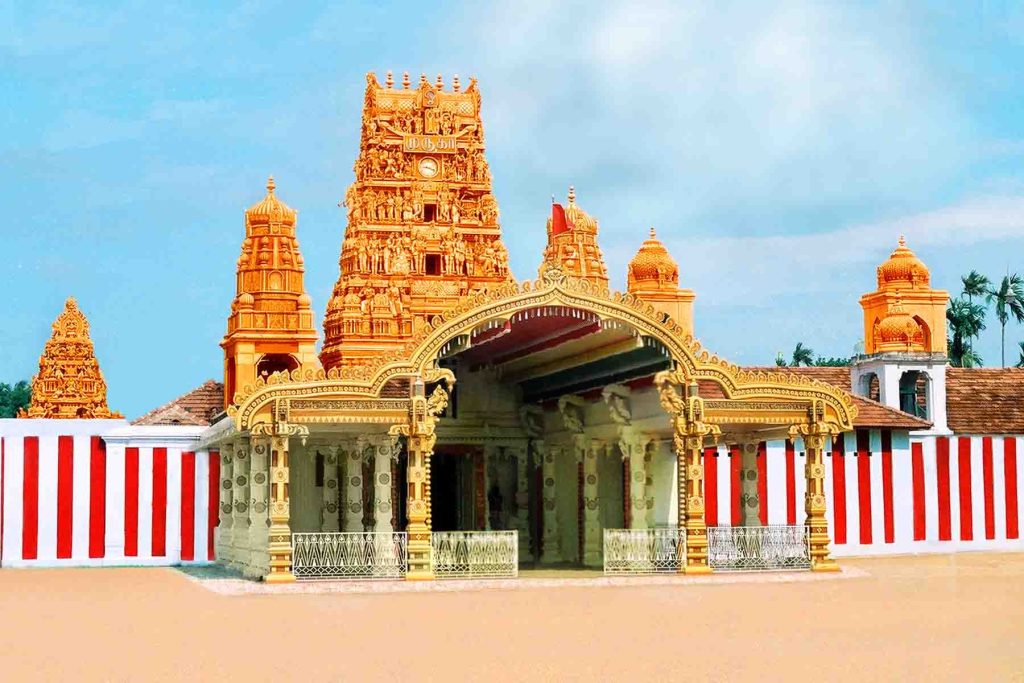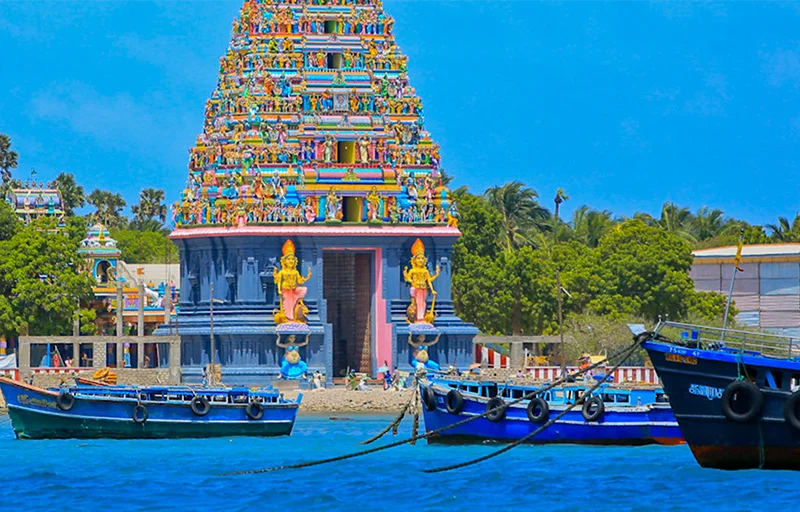The Jaffna Fort, is one such edifice. The focus is streamlined on the distinctive features that have been bestowed on this architectural marvel during the Dutch period. Jaffna is in the northern peninsula, connects to the rest of the country from the southeastern end. A navigable channel from sea could only enter Jaffna from one point in spite of the vulnerabilities caused by its geographical positioning. The other openings between various islands considered being too shallow for vessels irrespective of the size. The climate of the peninsula was tropical monsoonal with seasonal rainfalls. Despite the blistering heat of this flat land, it had fertile soil. Portuguese saw the potential and were allured by Jaffna. The Portuguese made Jaffna into an entrepot during their occupation. As there was no freedom of belief and excessive taxation, many fled Jaffna during the Portuguese period. The remaining made peace with the new rulers. The Portuguese were in constant fear of losing power to the Dutch and contemplated if and how Jaffna could be a beachhead for the Dutch to intrude. The insecurity rising within the controlling power led the Portuguese to build several Forts across the country. As a result, Jaffna Fort was built in 1619. The Portuguese had two enemies to fight; the Dutch and the natives. Eventually, with the Dutch taking control of the coastal belt of the country the Portuguese left for good.
The Dutch used the North for trading. The two main commodities that were traded were elephants and pearls. Vanni was the mainland of the North. The Vanni was mostly uninhabited and was home to herds of elephant and few tribal inhabitants. Captured elephants from Vanni and Matara were driven into the Jaffna Peninsula passing a shallow ford, which was called Elephant Pass. These elephants were then trained for combat and later exported to India.
In the grand timeline of colonialism in Old Ceylon, the interlopers birthed many archetypal wonders. Despite having been living as pawns of a power game instigated by commercial interest, rivalry between rulers prompted groundwork that led to ambitious developments. Phenomenal architectural expeditions took place while the mantle of power shifted from ruler to ruler. The country was recognised as the focal point in the main trade route that connected the world. The fertile soil that yielded crops screamed prosperity. Ceylon soon became the pinnacle of economic potential and for this very reason sparked a fierce battle for power. Fortresses were built in every accessible corner as a defence system to fight the anti-colonial struggles and other foreign invaders. After several decades of independence, today, the colonial legacy still lives on in many forms; from the cup of tea we are renowned for to many buildings, sites and infrastructure that we still use.
Unknown Author
Pearl fishing in Mannar was flourishing back then and the Dutch exploited this opportunity. The dye industry too was fattening the pockets of the Dutch. Purples, reds and browns were extracted from the roots of plants that grew in Jaffna and Mannar and were exported to India to dye their cottons.
The fortresses built in the North were different to the ones in other areas of the country. Fortresses in the North were built in order to stabilise colonial control. It was during Dutch rule that Jaffna Fort was expanded to become one of the best military architecture in the East. Jaffna Fort was considered the northern headquarters of the Dutch. During the Portuguese era, another fort was built to guard entry from the sea to the Jaffna Fort. The Dutch renamed this fort as Fort Hammenheil. Notable buildings within the Fort were the Dutch Lieutenant-Governor's house, which was later converted into the Queen's House during the British era and much later was the residence of the Head of State of the country prior to the conflict that started in the early 1980s. Then, barracks, warehouses, powder magazines from the Dutch era, a Dutch Reformed Church, guardrooms, police quarters, jail and a court complex amongst others were located inside the fort. The five bastions were named, Zeeland, Holland, Gelderland, Utrecht and Friesland after provinces of the Netherlands.

The Portuguese made Jaffna into an entrepot during their occupation. It was during the Dutch period that Jaffna Fort was expanded. After gaining control of Ceylon from the Portuguese, the Dutch demolished the Fort partially as needed and first renovated the inner circuit and few years later the outer circuit. The Fort is mainly built with limestone and black coral. Restoration was done according to the design and technology prevalent at that time. The end result was an unassailable fortress that was tastefully designed. However, a pentagon shaped fortress was considered to be large-in-size and required strong garrisons, which the Dutch failed to fulfill. As a result, three years after completing the restoration, in 1795, the Dutch surrendered Jaffna to the British.
Glacis outside the inner circuit protected the lower parts of the fort where the arms were stored and enabled the Dutch to aim at the enemy easily. The approach through the glacis stretched to the gates of the outer circuit. The paths were shaped into an S bend in order to prevent direct fire down its length. Ravelins, a triangular fortification following the inner circuit stood after the dry ditch. Anyone on the approach path can be easily detected from the parapet walls of the ravelins. Ramparts before the ditch had triple fire steps for musketry. All the bastions except Zeeland utilised six-gun embrasures on each side facing the opponent and three on each shorter flank facing along the ramparts. The hangman's tower is located on one of the bastions while the belfry was at the opposite end. Today only the remnants of the belfy remain while the hangman's tower is relatively intact.
The main entrance of the inner circuit is reached by a bridge over the moat. The Dutch kept the original leaf-gates; the outer face of the gate had iron spikes to deter war elephants trying to break in. In the original plan of the Portuguese, there had been an arch perched atop the gate and the bridge to the main gate from the entrance ravelin was interrupted by a drawbridge. Both these were removed by the Dutch. The Dutch guardrooms were converted into police quarters during later periods.
The Jaffna Fort is the second largest fort in Sri Lanka and one of the most notable forts designed by the Dutch. The Dutch elements are largely evident in the design and construction of the site and it is often referred to as the Jaffna Dutch Fort. Today, the fort is mostly in ruins as a result of relentless attacks that persisted for more than 30 years. The sea rampart is preserved to a certain degree, so is the tunnel system and the moat surrounding the fort. The full extent of many historical events are unknown due to loss of data.Though restoration work is moving at a slow pace, the hope is that this national heritage will be preserved for posterity.


